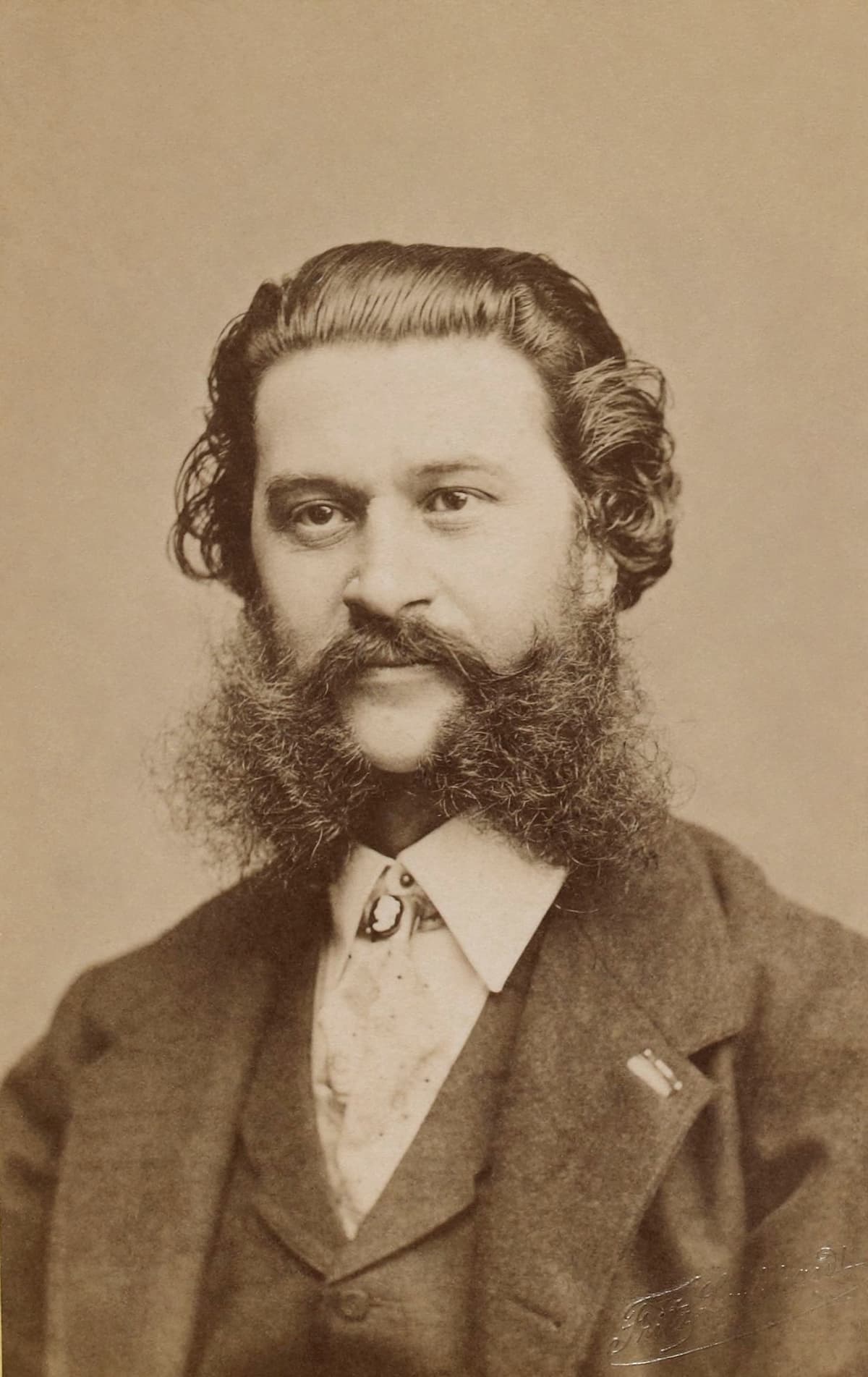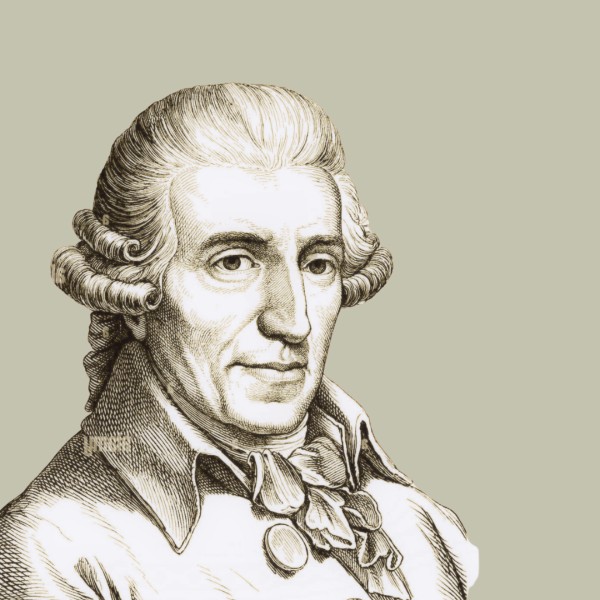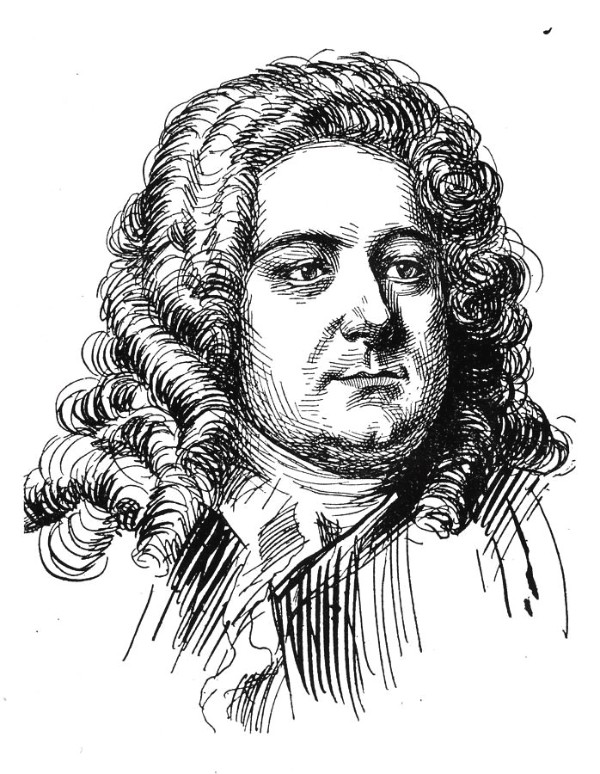Johann Strauss II was born into a famous and famously dysfunctional musical family just outside of Vienna in October 1825.

Fritz Luckhardt: Johann Strauss II
As a boy, Johann pursued music against his father’s wishes. His father had begun a string quartet that grew into a string orchestra in 1824, and he was constantly on the road. He envisioned a more settled life for his children and decided that his oldest son Johann should go into banking.
Johann, however, had other ideas. As a boy, he began studying violin secretly with a member of his father’s orchestra. When his father found out, he whipped him. But Johann remained undeterred.
In 1834, his father took a mistress. Johann’s mother eventually sued for divorce and did what she could to promote her son’s musical career.
Afterward, father and son entered into a fierce professional rivalry that continued until Strauss the elder’s death in 1849.
At that time, Johann merged their orchestras. Ultimately, his fame far eclipsed his father’s, and between the 1850s and 1880s he wrote some of the most famous dance music of the century.
Two of Johann Strauss II’s brothers became composers, too. So much for a settled life out of the spotlight!
Over the course of his career, Strauss became indelibly linked with Vienna and the politics of the Hapsburg Empire.
Today we look at eleven indispensable dances by Johann Strauss II:
Champagne Polka (1858)
The Champagne Polka was written for Strauss’s 1858 tour of Russia.
This spirited dance weaves in references to a popular tavern song with the lyrics “What do I care, what do I care, whether I’ve money or not!”
It’s often performed around New Year’s because of its name.
Evocative individualized names for musical works were one of the business innovations that Johann’s father helped to pioneer. He realized he could sell more sheet music if he gave his instrumental waltzes descriptive titles.
Johann Strauss II continued the practice – and benefited handsomely financially.
Tritsch-Tratsch-Polka (1858)
“Titsch-tratsch” is a term for gossip, and 1850s Vienna was famous for its gossip. In this lively polka, one can trace the lightning fast journey of what sounds like a particularly juicy rumor.
On the Beautiful Blue Danube (1866)
If anyone knows one work by Strauss, it’s this one, inspired by the Danube, the second-longest river in Europe.
Strauss wrote the work for the Vienna Men’s Choral Association, so the first version included a choral part. It included satirical lyrics about Austria’s current political situation. They’d just lost the Seven Weeks’ War to Prussia, which contributed to the erosion of the Austrian Empire’s power.
Unfortunately, the reaction to the work and its dark humor was cool.
However, that same year, Strauss gave the work another try and rearranged it for orchestra, removing the satirical undertones. That version was played at the 1867 World’s Fair in Paris and gained international renown.
Somewhat ironically given its origins, it’s now one of the unofficial anthems of Austria.
The Artist’s Life (1867)
Due to Austria’s political and military trouble in the late 1860s, the national mood was depressed, and many festivities were canceled…putting Strauss’s performing career at risk.
So he began writing dances that were a tad subtler than their predecessors, while still retaining their characteristic elegance.
“The Artist’s Life” was premiered shortly after the instrumental version of “The Blue Danube.” They became viewed as sibling works, and both became deeply beloved by audiences.
Tales from the Vienna Woods (1868)
The Vienna Woods are an important Austrian landmark, roughly thirty miles long and fifteen miles wide.
The woods served as royal hunting grounds until the mid-nineteenth century, and were populated by nomads, as well as Viennese residents looking for an escape from city life. (Schubert and Beethoven adored walking there.)
Tales from the Vienna Woods is actually a series of five waltzes, all of them with a somewhat rustic character: very appropriate, given their inspiration.
Wine, Women, and Song (1869)
Here’s another waltz that was originally written in a choral form for the Vienna Men’s Choral Association.
It was written for the association’s Fools’ Evening and dedicated to their honorary chorus-master, composer Johann von Herbeck. (He would enter music history as the figure who conducted the premiere of Schubert’s Unfinished Symphony.)
The title “wine, women, and song” was a German expression that alluded to embracing hedonism and life’s physical pleasures, somewhat similar to our modern English phrase of “sex, drugs, and rock and roll.”
One can certainly hear a sauciness and sophistication in this waltz that was not as present in some of Strauss’s earlier works.
Vienna Blood (1873)
This waltz celebrates the marriage of the Emperor’s young daughter Archduchess Gisela Louise Maria to Prince Leopold of Bavaria.
The premiere of this waltz is also remembered for being the first time that Strauss ever conducted the Vienna Philharmonic, despite his decades of professional success.
Ironically, the composer most closely linked to Vienna was kept from leading its famous orchestra because his music was considered too light and commercial.
Die Fledermaus Overture (1874)
By the 1870s, Strauss was writing fewer and fewer pieces for the dance hall and focusing on the more lucrative business of operetta. His most famous outing in this genre was “Die Fledermaus”, or “The Bat.”
The plot of Die Fledermaus was adapted from a successful French vaudeville comedy and features wacky plot devices like mistaken identities, a massive celebratory ball, and even a prison stint. All ends happily, however…and with champagne.
Roses from the South (1880)
“Roses from the South” is a waltz medley dedicated to King Umberto I of Italy.
In it, Strauss drew from another one of his operettas, “Das Spitzentuch der Königin” (The Queen’s Lace Handkerchief). That operetta has since faded into obscurity, but the lovely, slightly melancholic Roses medley has endured.
Voices of Spring (1882)
In the 1880s, soprano Bertha Schwarz – stage name Bianca Bianchi – was a star of the Vienna Court Opera. Strauss wrote a special concert waltz for her, a celebration of the arrival of spring, which he called “Voices of Spring.”
Like many of Strauss’s most famous works, the premiere was received with shrugs. However, later arrangements – many without the vocal solo that had initially prompted the work’s composition! – grew very popular.
Emperor Waltz (1889)
In 1889, Emperor of Austria Franz Joseph I traveled to Germany to meet with the newly crowned German Emperor Wilhelm II. There, the two leaders would toast in friendship.
The meeting had international political implications, and one can certainly hear the gravity of two European titans meeting in this particular waltz.
Conclusion
In his later life, Strauss continued focusing on operettas, but they aren’t heard as often today as his concert waltzes are.
He was composing a ballet when he was diagnosed with pleuropneumonia. He died in June 1899.
His brother Eduard decided to stop performing after his death, and he shut down his brother’s orchestra in 1901. He also had many of the original versions of Johann’s works burned in 1907.
Check out our tag about Johann Strauss!
For more of the best in classical music, sign up for our E-Newsletter


